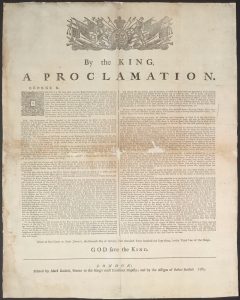Thomas Peace and Conor Wilkinson
On February 10, 1763, the Seven Years’ War came to a formal end. On a global stage, Britain had effectively collapsed the French Empire.
The conflict – fought mostly between France and Britain (though involving several other European powers on the continent) – had been brewing for over a decade. Rekindled just five years after a major dynastic struggle – known as the War of Austrian Succession – the 1740s and 1750s were years during which both France and Britain invested heavily in their militaries, especially in the places they claimed as colonies. In Mi’kma’ki/Acadie/Nova Scotia, for example, arose Fort Beauséjour (French) and Fort Lawrence (British) during the early-1750s, just four kilometers from each other.
Though officially war between the European powers was not declared until 1756, its violence began in the late spring of 1754 in the Ohio Valley. There, a young George Washington was sent by Virginia to stop the expansion of French forts being built to protect French interests. Washington attacked a small French force that had left the main work site, killing ten men, including the commander. France retaliated, capturing Washington, and causing both imperial powers to entrench their positions in North America. The next year, unable to resolve these tensions, violence broke out between Forts Beauséjour and Lawrence, marking the beginning of the conflict’s North American theatre.
The Royal Proclamation of 1763 – issued eight months after the peace made in Paris – illustrates what was at stake. The February peace confirmed what had transpired during the war: France’s colonies in North America were formally ceded to Britain. As Britain grappled with how to govern these new places, it also faced older and thornier problems related to claiming sovereignty over the Homelands of hundreds of North American nations. In this document, the newly crowned George III creates a new set of ground rules for North America. As you read through the Proclamation, consider the following questions:
- What assumptions does the Proclamation make about North America and Britain’s relationship to it?
- How did Britain understand its relationship to North American nations? How might they have understood their relationship to Britain?

This module was last updated in October 2022.
